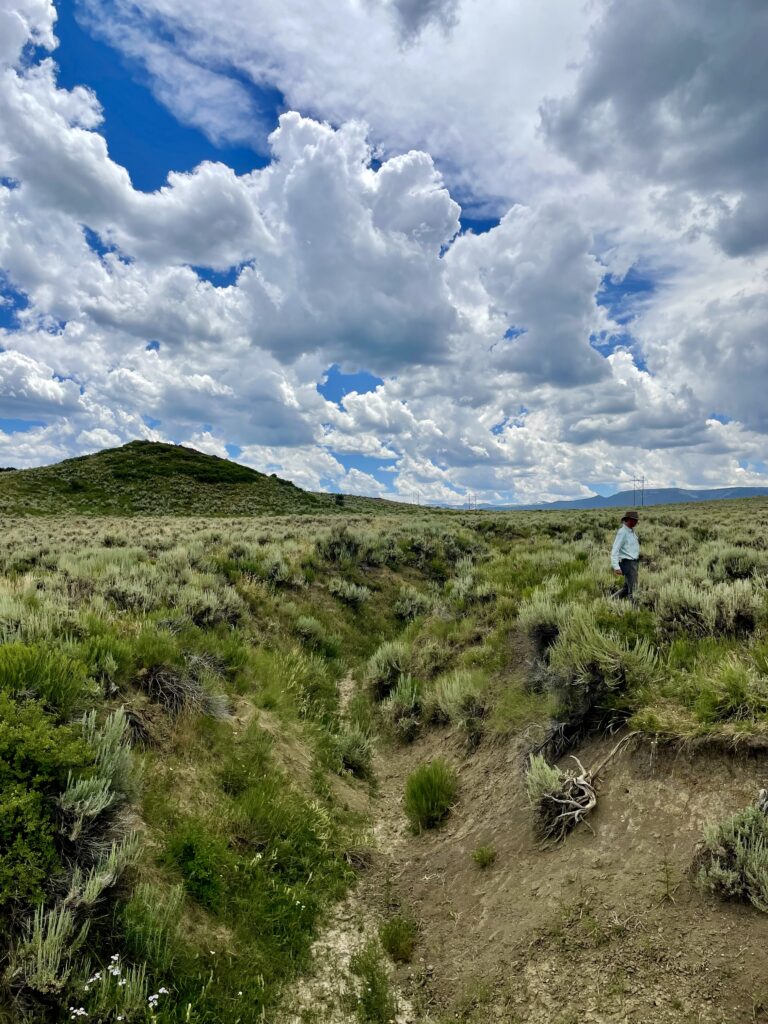How can additive conservation measures be financially incentivized on Western working lands?
Working with Colorado Cattlemen’s Agricultural Land Trust (CCALT), Alaina and I are exploring market-based models for ecosystem services to compensate landowners for their stewardship of wet meadows in Colorado’s Yampa Valley.
Often the idea of payment for ecosystem services (PES) conjures thoughts of the forest carbon offset market, protecting forests from development and extractive industries in exchange for carbon emissions abatement. While climate change from increasing global greenhouse gas emissions is a crisis demanding attention and solutions, the Western US faces additional environmental challenges such as water scarcity, fire susceptibility, erosion, and habitat loss.
Environmental credit trading involves market-like transactions where an amount of an environmental benefit being created is defined as a credit and its value is monetized and traded. Outside of carbon markets, these credits can cover a vast array of ecosystem services ranging from benefits to wetlands, streams, biodiversity, as well as water quality and quantity.
The fundamental question of our project: how do we build a market for stewardship of the wet meadows?
The low-cost, low-tech restoration techniques we are aiming to incentivize will not provide additional carbon sequestration, but rather improve habitat and reduce erosion. As we have worked through different ideas of wet meadow restoration funding mechanisms a few key themes have emerged through our discussions: local nature of the PES markets, buyers, and governance.

Local nature of the PES market
The carbon market is a global market, a ton of carbon emissions or sequestration has an equal impact on the atmosphere regardless of location. However, many environmental credits involving an ecosystem benefit such as biodiversity are created through interventions to conserve, restore, or sustainably manage a local site. These indicators are often less applicable outside a regional context.
Therefore, these habitat/biodiversity credits are inherently localized and place-based, creating both challenges and opportunities in terms of market features.
Buyers
PES markets address externalities not captured within our current economic system. The creation of these markets will initially be more impact driven rather than returns driven. Therefore, are there sources of risk-tolerant capital (public or philanthropic) willing to help establish the market?
Outside of regulations, local PES markets must appeal to local businesses, especially those who benefit either directly or indirectly from those ecosystem services. For example, a local brewery might be motivated to buy local watershed credits, understanding the link between local water quality and water as an ingredient for its beer. Or an outdoor recreation equipment company may be interested in “sage-grouse habitat” credits to promote quality wildlife habitat that is also crucial for thriving big game—elk, deer, and pronghorn—that are vital to the outdoor recreation.
Governance
How do businesses, nonprofit organizations, and local/state governments interact with each other in these local PES markets? One of the critical constraints of a local, smaller scale market is the capacity of ecosystem benefit verification and general administration. The cost of the verification cannot surpass the monetary value of the credit. What type of organization is best suited to facilitate the sale of credits? For example, would a county government have this capacity or a third-party nonprofit organization, unaffiliated with the land trusts/farmers selling the credits?
As we continue our research and collaboration with CCALT this spring, these are some of the critical questions we will engage with to inform our final report and recommendations.
